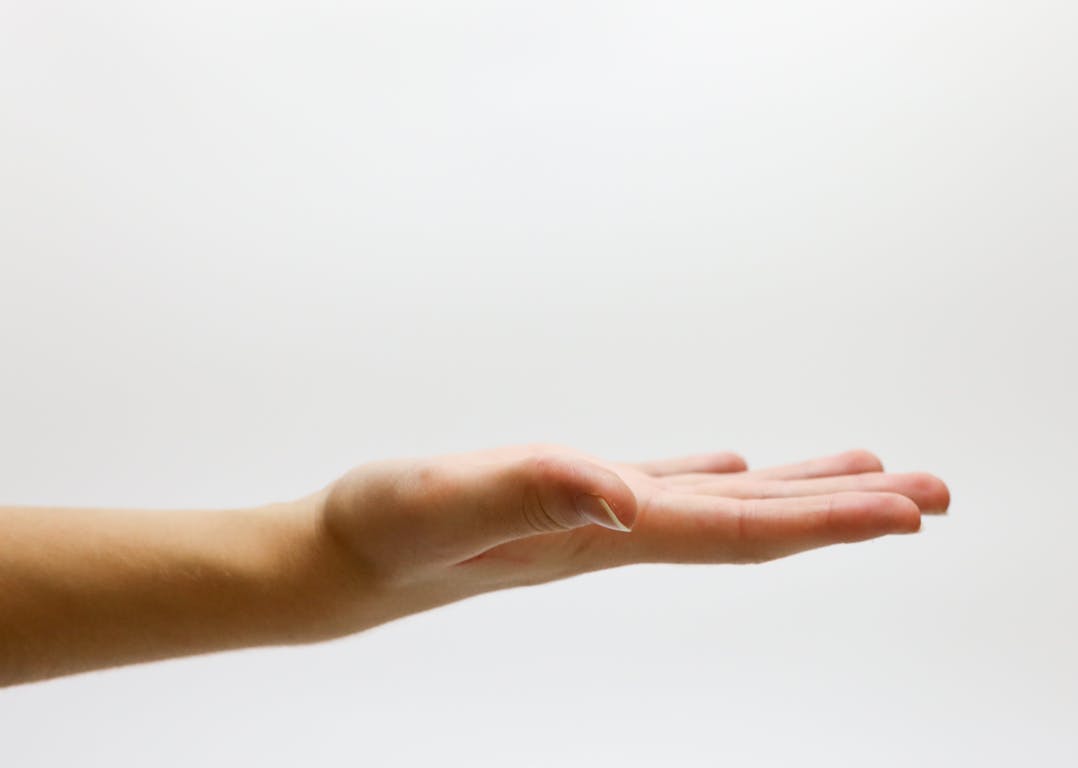The human brain is truly remarkable; it takes all the data from our surroundings and builds the reality we experience. However, what happens when this perception can be changed? One of the most interesting psychological tricks is the Rubber Hand Illusion which proves that our sense of self and body ownership can be tricked very easily.
The Experiment: Blurring the Lines Between Real and Fake
In a standard Rubber Hand Illusion study, participants are seated in front of a table with their real hands out of sight, but within reach of the researcher. A plastic hand is then placed in front of them in a position that resembles their own hand as realistically as possible. The experimenter then uses two paintbrushes, and with the participant’s concealed hand and the rubber hand, the experimenter starts stroking both hands.
In a short time of this synchronous stimulation, something rather unexpected happens. Some of the participants claim to feel a tingling sensation or even ownership of the rubber hand. They feel pain when the rubber hand is touched, or even perceive the touch as coming from the rubber hand.
The Science Behind the Illusion: A Multisensory Meltdown
Visit Our Website For More News: NRUTimes
The Rubber Hand Illusion utilizes an important concept of how our brain forms the body representation. The visual and tactile systems are interdependent in that the brain uses both to create a map of the body. When the visual information is received (watching the rubber hand being stroked) and the tactile information is received (feeling a stroke on the hidden hand), the brain cannot differentiate between the two stimuli sources. This sensory conflict results in the experience of owning the rubber hand.
Beyond the Lab: The Rubber Hand Illusion and its Applications
The Rubber Hand Illusion is not just a fun experiment to be performed at a party but it has much more significance. It provides important information on how our brains interpret the stimuli received through the senses and build the concept of ‘self’. It has been applied in research concerning pain sensation, body image in amputee patients, and even in the design of prosthetic limbs. Scientists are studying how it is possible to apply the knowledge of Rubber Hand Illusion to enhance the interaction between the human body and prosthetic limbs and to minimize phantom limb pain.
A Lesson in Perception: Don’t Believe Everything You See (or Feel)
The Rubber Hand Illusion is an excellent example of how our understanding of the world is not as straightforward as it may seem. It underlines the role of sensory input and how our brains integrate it to provide a consistent experience even if the input information may be erroneous.
In today’s society where fake news and social media presence are significant problems, the Rubber Hand Illusion helps to become a more skeptical audience. We have to think critically, use firsthand reliable information, and consider the possibility of our prejudice. So, knowing the tricks our mind is capable of, we are more critical and thus, wiser when facing the world.
Variations on the Theme: Exploring Different Setups
The basic form of the Rubber Hand Illusion is based on synchronous touch, but to investigate the conditions that lead to the phenomenon, scientists have tried different modifications. Here are some interesting twists: Here are some interesting twists:
- Asynchronous Touch: In cases where the strokes on the real and rubber hand are not synchronized, the illusion is either reduced or eliminated. This suggests that for the illusion to take effect, there is a need to balance the visual and the tactile aspects.
- Visuotactile Conflict: Just think of the experience of seeing the rubber hand being stroked while feeling a touch on your foot. This mismatch usually disrupts the illusion, revealing how the brain cares more about spatial correspondence (touch on matching body parts) for ownership.
- Visual Alterations: This shows that vision plays a crucial role in the perception of the body because the rubber hand can be replaced with a virtual hand which is displayed on a screen and still elicits the illusion.
The Neural Correlates: Where the Magic Happens
For instance, the Rubber Hand Illusion has been associated with specific brain regions using fMRI imaging. Some research shows that there is greater activation in the premotor cortex and the somatosensory cortex which are parts of the brain that are involved in motor planning and touch sensation respectively. This is seen when the brain tries to combine visual and tactile information to form a complete representation of the body.
The Philosophical Debate: Body Ownership and the Self
The Rubber Hand Illusion poses important philosophical questions about the self and body ownership. Is the self-contained in the head, or does it emerge from the way the head and the rest of the body engage with the environment? Is it possible to own a part of the body, which is in fact not genetically and physiologically a part of an individual? These questions expand the field of neuroscience and philosophy and encourage us to think about what it means to exist as the people we are.
Beyond the Illusion: The Future of Body Perception Research
The Rubber Hand Illusion has implications for different fields because it provides insight into the way the brain perceives the body. Researchers are exploring how this knowledge can be applied to: Researchers are exploring how this knowledge can be applied to:
- Pain Management: Can the illusion be applied to ease the phantom limb pain in the amputees by providing an artificial limb sensation?
- Prosthetics Development: Can understanding body ownership assist in the creation of better prosthetic limbs that are as close as possible to actually being a part of the body?
- Virtual Reality: What should be done to VR experiences so that the principles of the Rubber Hand Illusion can be incorporated in order to make the experiences better and more immersive?
Conclusion
The Rubber Hand Illusion is not simply an entertaining novelty; it is a fascinating glimpse into the mind of the individual. It shows how the input from our senses, the ability of our brains to process these inputs, and the formation of our self-identity are interrelated. Since it makes it difficult to distinguish between the real and the fake, it makes us more vigilant in our everyday lives in terms of the information that we consume.


